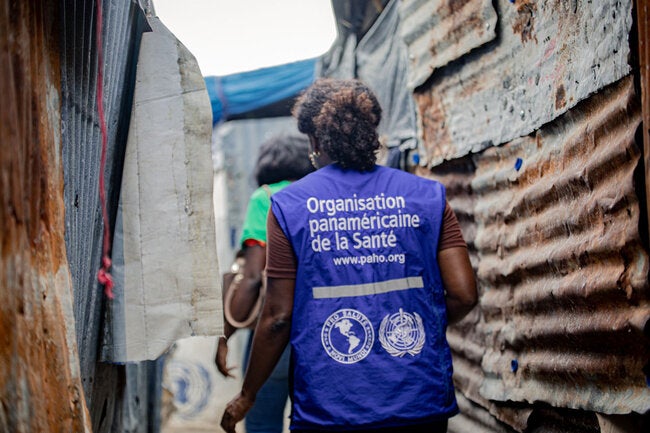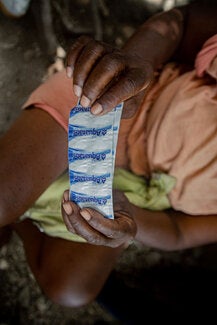His story is tragically familiar. Amid violence and instability, nearly 1.3 million Haitians have been forced from their homes. Many now live in crowded makeshift settlements across the Port-au-Prince metropolitan area—places where clean water is scarce, sanitation is fragile, and the risk of waterborne diseases, especially cholera, remains high.
While the number of suspected cholera cases in Haiti has continued to decline nationwide, the threat has not disappeared. Since January 2025, over 2,500 cases have been reported, including several localized outbreaks in displacement sites.
To protect these communities, the Ministry of Public Health and Population (MSPP), with support from the Pan American Health Organization / World Health Organization (PAHO/WHO), has scaled up its response across 66 IDP sites in and around the capital. Backed by funding from the European Union’s Civil Protection and Humanitarian Aid Operations (ECHO) and the Bill and Melinda Gates Foundation, this coordinated effort is saving lives and restoring a sense of dignity.
A central focus of the strategy has been early detection and rapid response. Since the beginning of the year, nearly 87 surveillance officers and 13 data managers have been trained and deployed to identify and report suspected cases. PAHO/WHO has also helped to establish a new cholera treatment center (CTC) and provided training on cholera case management and infection prevention and control (IPC) for six existing CTCs, including St Luc Hospital, where G. received treatment.
“When I arrived, they gave me a bed, a bucket, and medication. I had access to a doctor almost 24/7”, he said. Now back in the displacement site with his family, he reflects on life in the camp: “I’m asking for security so I can return home. Because the way we live here is not a human life —it’s the life of an animal.”
Beyond treatment, prevention is key. Community awareness sessions – supported by PAHO/WHO—have reached nearly 7,000 people and were accompanied by the distribution of mosquito nets, water purification tablets, and oral rehydration solution (ORS) packets.
“This is because of the way we live here,” said Jacinthe, whose 6-year-old son fell ill with cholera last month. “At home, you might have a little chair to put the child in. But here, he spends most of his time on the ground. I took him to the health center— they gave him oral rehydration solution, and the diarrhea stopped.”
With the rainy season fast approaching and insecurity continuing to drive displacement, the risk of new outbreaks remains high. Health workers, community volunteers, and humanitarian partners are working against the clock to ensure that clean water, safe sanitation, and lifesaving treatment reach every family who needs it.
For G., Jacinthe, and the thousands of others navigating life in displacement, each health intervention is more than a service—it’s a step toward better health, greater safety, and the hope for a future beyond the camps.

